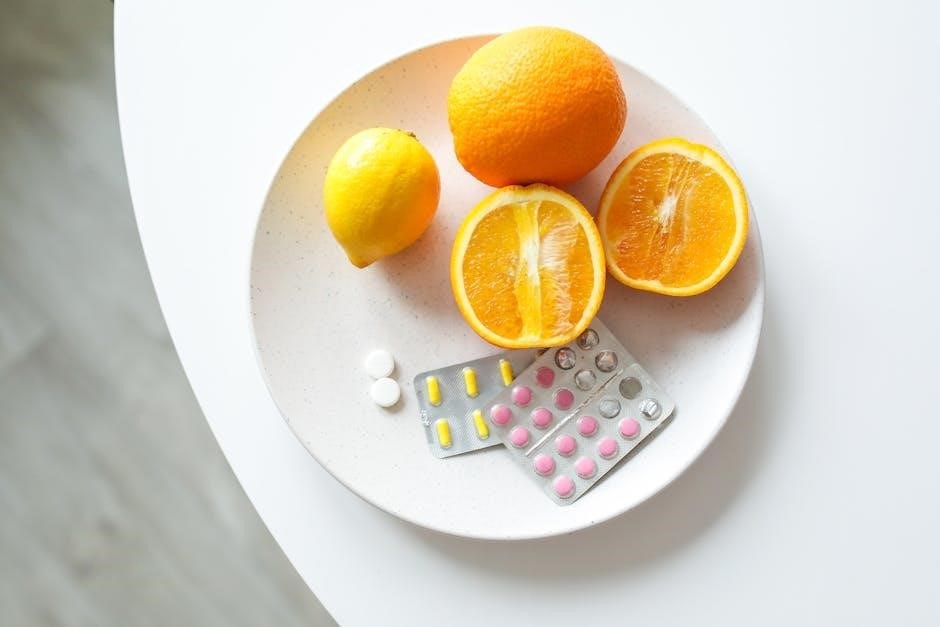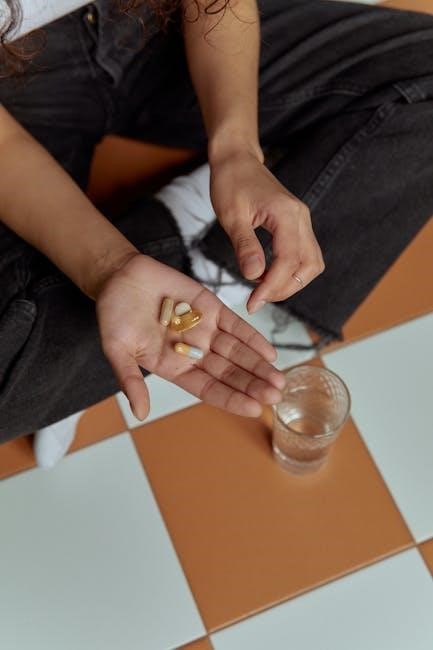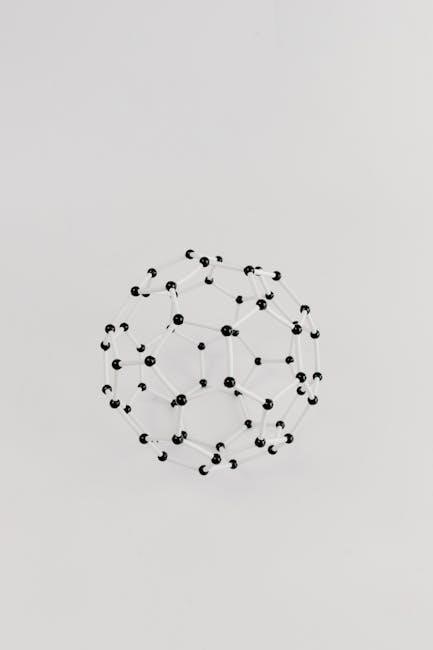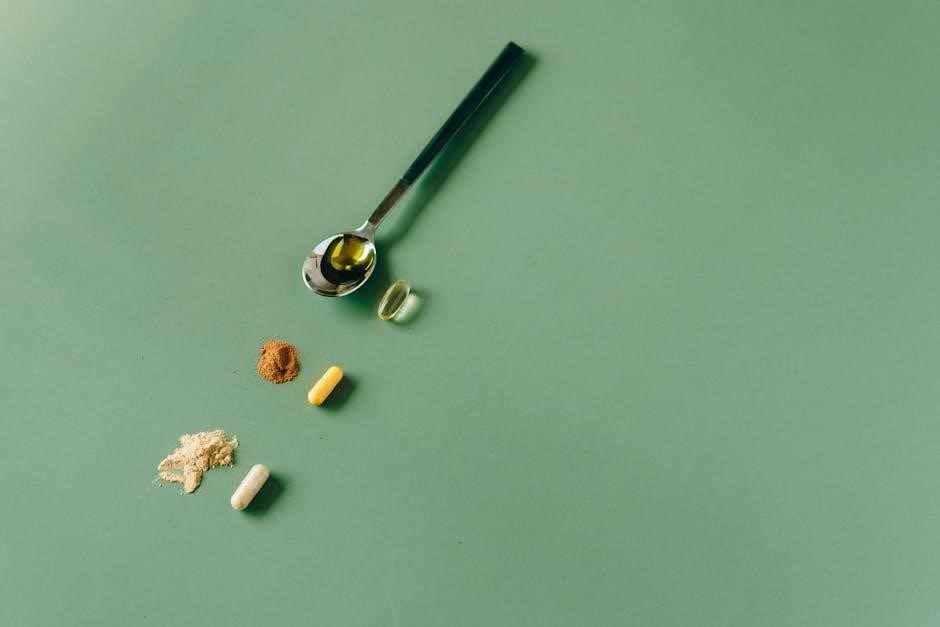The PillCam is a cutting-edge, minimally invasive diagnostic tool using a video capsule to visualize the digestive tract. It aids in detecting gastrointestinal issues efficiently and comfortably.
What is a PillCam?
A PillCam is a small, ingestible capsule equipped with a tiny video camera that captures images of the digestive tract. It is approximately the size of a large vitamin pill, designed to be swallowed easily. The capsule contains a miniature camera, battery, and transmitter, allowing it to take photos as it naturally moves through the body. This non-invasive diagnostic tool is primarily used to visualize the small intestine and colon, helping doctors identify gastrointestinal conditions such as bleeding, inflammation, or abnormalities. Unlike traditional endoscopy, the PillCam eliminates the need for sedation or invasive procedures, making it a more comfortable option for patients. The images captured by the PillCam are transmitted to a wearable sensor belt, which records data for later analysis by a healthcare provider.
Types of PillCam Exams (Small Bowel, Colon, etc.)
The PillCam is utilized for various diagnostic procedures, primarily targeting different areas of the gastrointestinal tract. The most common exam is the small bowel PillCam, designed to visualize the small intestine, aiding in the detection of bleeding, Crohn’s disease, or other abnormalities. Another type is the colon PillCam, which examines the colon for polyps, inflammation, or cancer. There is also an esophageal PillCam, focused on the esophagus to diagnose conditions like esophagitis or Barrett’s esophagus. Each exam type requires specific preparation and has distinct imaging focuses, ensuring tailored diagnostics for accurate patient care. The choice of exam depends on the patient’s symptoms and the suspected condition, as determined by their healthcare provider.

Preparation for PillCam Procedure
Preparation involves stopping iron supplements 5 days prior, following a liquid diet the day before, and using bowel prep solutions like Golytely or Miralax to ensure a clean digestive tract for clear imaging.

5 Days Before: Stopping Iron Supplements
Five days before your PillCam procedure, it is essential to stop taking any oral iron supplements. This includes checking your multivitamins for iron content and ensuring they are discontinued as well. Iron can interfere with the clarity of the images captured by the PillCam, so adherence to this step is crucial for accurate results. Your doctor may provide specific instructions, but generally, the last dose of iron should be taken at least five days prior to the procedure. This preparation ensures the digestive tract is clear and allows the capsule to capture high-quality images of your gastrointestinal system. Proper compliance with this step is vital for the success of your PillCam exam and the accuracy of your diagnosis.
Day Before: Liquid Diet and Bowel Preparation
The day before your PillCam procedure, you must adhere to a liquid diet starting after lunch. Clear liquids, such as water, broth, or electrolyte solutions, are permitted, but solid foods should be avoided. This step ensures your digestive tract is clear for optimal imaging. In the evening, you will typically be instructed to drink a bowel preparation solution, such as Golytely or Miralax, to cleanse your system further. It is crucial to follow the prescribed timing for consuming these preparations, usually around 6 PM, to ensure effectiveness. Avoid consuming dark liquids or red dye, as they may interfere with image clarity. Proper bowel preparation is essential for the PillCam to capture accurate images during the procedure. Adherence to this step is vital for the success of your exam.
Day Before: Drinking Golytely or Miralax
The evening before your PillCam procedure, you will need to drink a bowel preparation solution such as Golytely or Miralax. This step is crucial for cleansing your digestive tract to ensure clear images during the exam. Typically, you will start drinking the solution around 6 PM and continue until the entire preparation is consumed. The solution should be mixed with water as directed and consumed at a steady pace, often 1 cup every 15-20 minutes. The taste may be unpleasant, but it is essential to complete the full dose. Some patients may experience mild bloating or cramping, but these effects are temporary. Avoid drinking dark liquids or those containing red dye, as they can interfere with image quality. Stay near a bathroom during this process, as the preparation will induce bowel movements. Completing the full preparation ensures the best results for your procedure.

Day of Procedure Instructions
Swallow the PillCam capsule with water, then wear the sensor belt. After 2 hours, drink clear liquids, and after 4 hours, have a light lunch. Avoid smoking and stay hydrated to ensure smooth procedure completion.
What to Do on the Morning of the Procedure
On the morning of the PillCam procedure, avoid eating or drinking except for necessary medications with a small sip of water. Arrive on time, wearing loose, comfortable clothing. Do not wear dresses or bulky garments that may interfere with the sensor belt. Ensure all electronic devices like phones or radios are kept away to prevent interference. Bring any completed event forms or documents as instructed by your healthcare provider. Be prepared to swallow the capsule and wear the sensor belt for the duration of the procedure. Stay hydrated by drinking water as advised, and avoid smoking or consuming anything until the specified time. Following these steps ensures accurate results and a smooth procedure.
Wearing the Sensor Belt and Ingesting the Capsule
On the day of the procedure, you will be fitted with a sensor belt around your waist. This belt holds the data recorder that tracks the PillCam’s journey through your digestive system. Once the belt is securely in place, you will swallow the PillCam capsule with a sip of water. The capsule is about the size of a vitamin pill and contains a tiny camera that captures images of your digestive tract. After ingesting the capsule, you must wear the sensor belt continuously for the duration of the procedure, typically 8-12 hours, to ensure accurate data collection. Avoid strong electromagnetic fields, such as MRI machines, during this time. Drinking water is allowed, but follow specific dietary instructions provided by your healthcare provider to ensure optimal results.
Post-Ingestion Diet: Clear Liquids and Light Snacks
After swallowing the PillCam capsule, you may begin drinking clear liquids, such as water, broth, or herbal tea, starting 2 hours after ingestion. At the 4-hour mark, you can gradually introduce light snacks, such as toast, yogurt, or soup. Avoid consuming heavy meals or solid foods until the procedure is complete. It is crucial to follow this dietary plan to ensure the capsule moves smoothly through your digestive system and captures clear images. Additionally, refrain from consuming dark-colored liquids like coffee or tea, as they may interfere with image clarity. Stay hydrated by drinking water regularly, but avoid carbonated beverages. Adhering to this diet will help ensure accurate results from your PillCam procedure.

During the Procedure
Wear the sensor belt securely around your waist to monitor the capsule’s progress. Track key events like eating, drinking, or discomfort using the provided event form for accurate results.
Wearing the Sensor Belt and Monitoring
Put on the sensor belt snugly around your waist, ensuring the sensors are in contact with your skin. Avoid removing the belt until the procedure ends. Carry the data recorder in the provided bag. Stay hydrated by drinking water as instructed. Note any symptoms or activities in the event form. If the belt feels loose, adjust it. Don’t expose the equipment to strong magnetic fields. Monitor for any discomfort and report it immediately. The belt captures real-time data, aiding your doctor in diagnosing issues accurately. Follow all guidelines to ensure clear imaging and successful results.
Tracking Events with the Capsule Endoscopy Event Form
Use the Capsule Endoscopy Event Form to document the time of swallowing the PillCam, eating, drinking, or any physical activities. Record symptoms like nausea or abdominal pain. Note bowel movements and when you pass the capsule. Return the completed form to your doctor with the sensor belt. Accurate tracking helps correlate images with specific events, improving diagnostic accuracy. Carry the form with you during the procedure to ensure all details are captured promptly. This documentation is crucial for your physician to analyze the findings effectively. Be thorough and precise when logging events to support a successful and informative procedure outcome.

After the Procedure
After the procedure, resume normal activities and diet as instructed. Await results from your doctor, typically within a few days. Attend any scheduled follow-up appointments to discuss findings and next steps. Ensure to pass the capsule naturally without forcing it, usually within 24-48 hours. Contact your doctor immediately if you experience unusual symptoms or delays in passing the capsule. Proper follow-up ensures comprehensive care and accurate diagnosis. Maintain open communication with your healthcare provider for any concerns or questions post-procedure.
Resuming Normal Activities
After completing the PillCam procedure, you can gradually resume your normal activities. Most patients can return to work or daily routines immediately. However, avoid strenuous exercises for at least 24 hours to ensure the capsule moves naturally through your digestive system. You should also avoid operating heavy machinery or driving until you feel fully recovered. It’s important to listen to your body and rest if you experience any discomfort. Resuming normal activities too quickly may cause unnecessary strain. Always follow your doctor’s specific instructions regarding activity levels post-procedure. This ensures a smooth recovery and accurate results from the PillCam examination. Your healthcare provider may provide additional guidance based on your individual condition.

Awaiting Results and Follow-Up
After the PillCam procedure, it typically takes a few days to a week for the results to be analyzed and reviewed by your healthcare provider. During this time, it’s important to avoid making any major medical decisions without consulting your doctor. Once the results are ready, you will be scheduled for a follow-up appointment to discuss the findings. Your doctor will explain the results, address any concerns, and outline the next steps if further testing or treatment is needed. Be sure to attend this appointment to ensure proper communication and care. This follow-up is crucial for determining the best course of action based on the PillCam’s findings. Always adhere to your doctor’s recommendations to ensure optimal outcomes.